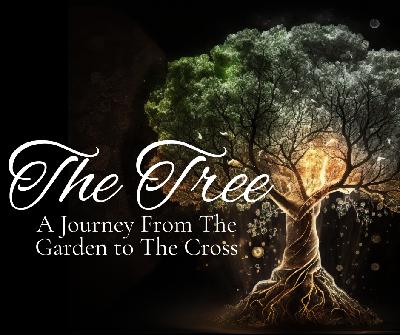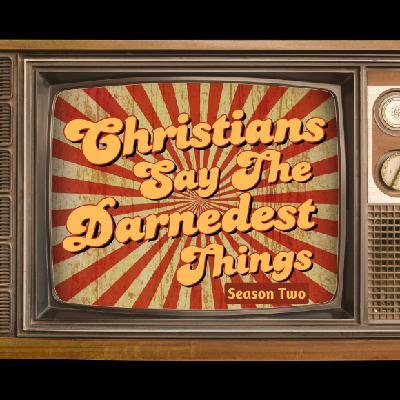The Serpent and the Seed
Description
In his book, The Warrior Savior, Owen Strachan states in the very first three sentences in the first chapter the point of every page in the Bible: “It was a tree that damned us. It was a tree that redeemed us. And it will be a tree that heals us in the age to come—time beyond all time.”[1] I want to borrow and use Strachan’s opening statement in his book as the point of this sermon series. It is the big idea of the overall message of the seventeen sermons that will make up this series that I have titled, The Tree.
I assume that you already know this, but just in case you don’t, here it is: We are in a war! If you are a Christian as I am, then WE are at war. The war we are in is both spiritual and supernatural for we are warned: “For our struggle is not against flesh and blood, but against the rulers, against the powers, against the world forces of this darkness, against the spiritual forces of wickedness in the heavenly places” (Eph. 6:12 ).
We are told that there is a domain of darkness (Col. 1:13 ; 1 Pet. 2:9) over which a powerful malevolent being rules (John 8:44 ; Eph. 2:2). Before we look into how it is that the domain of darkness came into existence, let me read something for you, and see if what you hear sounds like a commentary on the kinds of things that seem to be more and more common:
But realize this, that in the last days difficult times will come. For people will be lovers of self, lovers of money, boastful, arrogant, slanderers, disobedient to parents, ungrateful, unholy, unloving, irreconcilable, malicious gossips, without self-control, brutal, haters of good, treacherous, reckless, conceited, lovers of pleasure rather than lovers of God, holding to a form of godliness although they have denied its power... (2 Tim. 3:1-5)
So, how did we get here? Where are we going? What hope do we have that it will ever get better? To answer that question, we need to go to the beginning.
The Tree of Life and It’s Life-Giving Fruit
Like all stories, our story also has a beginning. Genesis 1:1 begins in the same way all good stories begin: “In the beginning...” What happened in the beginning? “God created the heavens and the earth” (v. 1). This is how we tell stories: “Once upon a time…” “A long, long time ago…” In a galaxy far, far away…” Like all other stories, our story begins in the mind of God. When, “And the earth was a formless and desolate emptiness, and darkness was over the surface of the deep, and the Spirit of God was hovering over the surface of the waters” (v. 2), God spoke into the emptiness and created out of nothing that which did not exist previously.
Out of the imagination of the mind of God came forth a world brimming with life and worship. On the first day God created the heavens and the earth; day and night. On the second day He divided the heavens from the earth. On the third day God created the land, sea, and vegetation. On the fourth day He created the sun, moon, and stars. On the fifth day, God created creatures great and small. On the sixth day, God created land animals and finally mankind. And, on the seventh day… God rested.
The crowning moment of creation was when God said, “Let us make mankind in Our image, according to Our likeness.... So God created man in His own image, in the image of God He created him; male and female He created them” (vv. 26, 27). Humanity was born—not simply another creature, but a unique reflection of the Creator Himself. Among all living things, only human beings bear the image of God, set apart to represent Him in the world He created with design, beauty, and purpose. God blessed the man and his wife and commanded them to, “Be fruitful and multiply, and fill the earth, and subdue it; and rule over the fish of the sea and over the birds of the sky and over every living thing that moves on the earth” (v. 28).
Owen Strachan makes the point concerning Adam: “Adam, the first man, was a priest and a king onto God. He lived and ruled under the divine regency of his Maker.”[2] The woman, later to be called Eve in the story, came from Adam’s body and God brought her to Adam as his wife and helper to join him in the mission to exercise dominion on the earth and fill it with humans like themselves and so that they too would walk in obedience and love with their Creator.
When God created, He didn’t use special effects or any tricks; He spoke, and everything in the universe and beyond came into existence. When He had finished with creation, God declared it to be “very good” (v. 31). “In the beginning, God created the heavens and the earth” (Gen. 1:1) when he took the blank canvas of nothing and then painted the beauty of creation with the brush of His omnipotent Word.
Before Eve was brought to Adam as a helper, God gave Adam another command: “Then the Lord God took the man and put him in the Garden of Eden to cultivate it and tend it. The Lord God commanded the man, saying, ‘From any tree of the garden you may freely eat; but from the tree of the knowledge of good and evil you shall not eat, for on the day that you eat from it you will certainly die.’” (2:15-17).
The Tree of the Knowledge of Good and Evil and It’s Curse-Producing Fruit
Before God formed Adam from the dust, He had already created trees on the third day. Among all the trees He made, two were of great significance: the Tree of Life and the Tree of the Knowledge of Good and Evil. Both of these were placed at the center of the Garden of Eden (Gen. 1:11 ; 2:9). The fruit from the Tree of Life was available for Adam and Eve to freely enjoy, and by eating it, they could live forever (3:22 ). In contrast, eating the fruit from the Tree of the Knowledge of Good and Evil would lead to death. In this way, God presented humanity with a choice in Eden: each day, Adam and Eve could choose life by lovingly obeying God, or they could choose death by turning away from Him in disobedience and rebellion.
Just as J.R.R. Tolkien’s The Hobbit begins with the memorable line, “In a hole in the ground there lived a hobbit,” introducing the humble yet unexpectedly heroic Bilbo Baggins, Genesis 3 ushers us into a pivotal moment with the arrival of a seemingly ordinary serpent. However, unlike Bilbo, whose heroism gradually unfolds, the serpent in Genesis 3 is far from harmless—he is revealed as the true antagonist of humanity’s story.
It’s important to remember Adam’s unique role in the garden: he was appointed by God to serve both as priest and king, entrusted to live and rule under God’s authority. The significance of Genesis 3:1 cannot be overstated, as it marks the moment when the serpent targets Eve, the wife of God’s chosen representative, with cunning intent. The serpent’s temptation comes in the form of a subtle question, challenging God’s word: “Did God really say...?” (v. 1). This question sets the stage for the unfolding drama of deception and a choice that will shape the course of human history.
The root of the temptation was to question the goodness of God because He withheld fruit from only one tree in the garden. In other words, Satan was tempting Eve to doubt the goodness of God. Thomas Watson once wrote concerning sin, “Sin first tempts and then damns. It is first a fox and then a lion.”[3] So Eve, “saw that the tree was good for food, and that it was a delight to the eyes, and that the tree was desirable to make one wise, she took some of its fruit and ate...” But she did not stop there, “...and she also gave some to her husband with her, and he ate” (Gen. 3:6). Their innocence was violated by their rebellion, “Then the eyes of both were opened, and they knew that they were naked; and they sewed fig leaves together and made themselves waist coverings” (v. 7). Instead of choosing life, Adam and Eve chose death; they believed the lie of the serpent and thought that by eating the forbidden fruit that they would be God’s equal. They were wrong. They doubted the truthfulness of God’s word and His faithfulness to honor all of His promises and what they received was a curse instead of the blessing the serpent promised.
The serpent was much more than what Adam and Eve believed him to be. Jesus said of the serpent, that he, “was a murderer from the beginning, and does not stand in the truth because there is not truth in him. Whenever he tells a lie, he speaks from his own nature, because he is a liar and the father of lies” (John 8:44 ).
Throughout the Bible, we learn that the serpent is also the Accuser (Rev. 12:10 ), the Adversary (1 Pet. 5:8), the Beast (Rev. 14:9-10), and Beelzebub (Matt. 12:24 ). He is the dragon (Rev. 12:9), the evil one (John 17:15 ), the father of lies (John 8:44 ), and the god of this age (2 Cor. 4:4). The serpent is the lawless one (2 Thess. 2:8-10), the prince of the power of the air (Eph. 2:1-2), the ruler of demons (Luke 11:15 ), the











